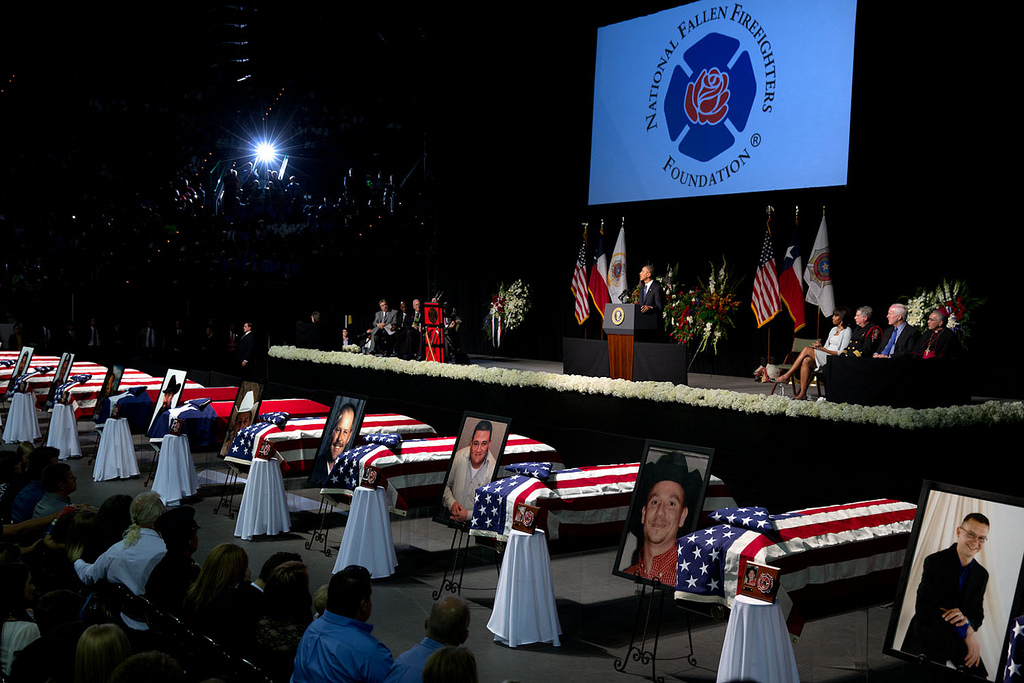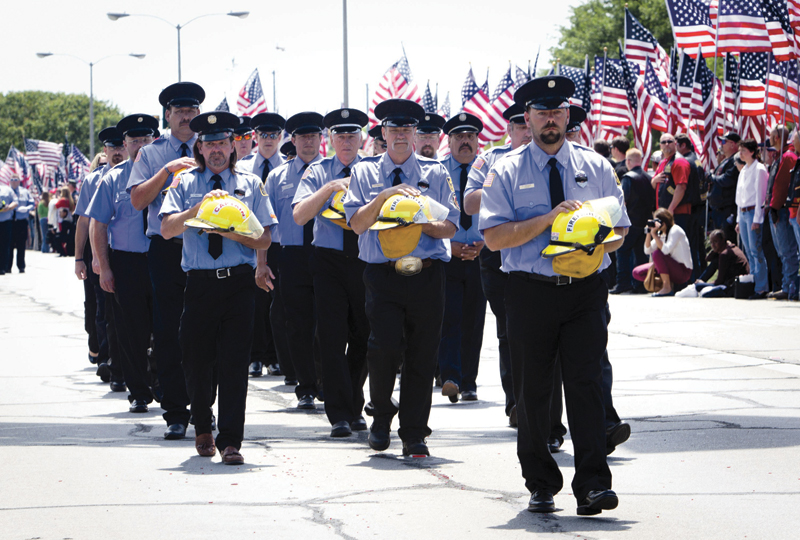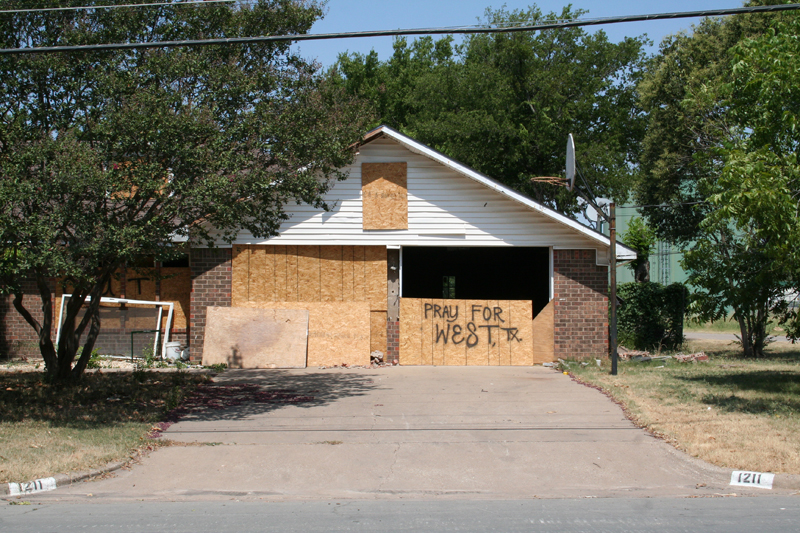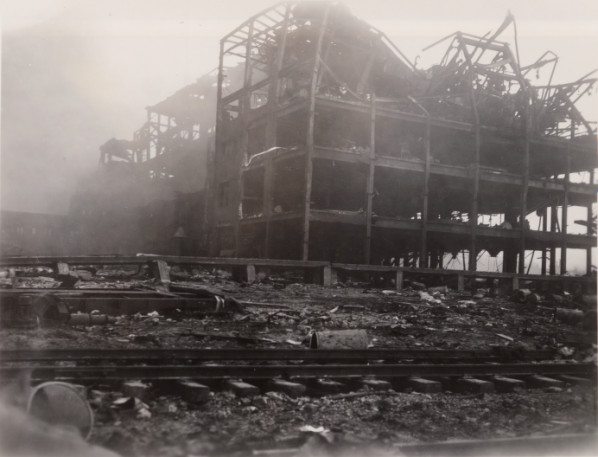
In West Explosion, Echoes of Another Texas Tragedy
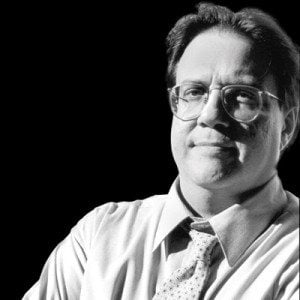
Above: A rubber factory destroyed by the 1947 Texas City disaster.
The still-unfolding tragedy in West, Texas—where a fertilizer plant caught fire and exploded on Wednesday night—is a reminder of how achingly redundant some things in the state can be. There has been a long string of industrial explosions, accidents and mishaps that not only claim lives but unleash eerily similar and unanswered questions about negligence and official oversight.
Texas was home to the largest industrial disaster in American history—and it happened to involve fertilizer, the very thing at the core of the West explosion. In what most historians call The Texas City Disaster of 1947, several tons of ammonium-nitrate fertilizer blew up and set off a series of fires and eruptions that claimed close to 600 lives, injured 5,000, knocked planes out of the sky, and allegedly inspired a hard look by government officials at workplace regulations, and disaster preparedness (and response) in municipalities, counties and states around the nation.
The cruel irony of what happened in Texas City is echoing right now in West. The fertilizer that leveled parts of Texas City in 1947 was destined for Europe as part of the Marshall Plan, to help revitalize bombed-out farms—and to encourage parts of Europe to stay clear of the Soviet Union. Scientists around the nation and world were well aware of fertilizer’s capabilities. They had long warned that it was capable of massive destruction (including bombs), but that it could also be used to make crops grow almost magically.
Timothy McVeigh resorted to ammonium-based fertilizer when he bombed the federal building in Oklahoma City in 1995. So did the terrorists who first tried to take down the World Trade Center, in 1993. Knowledge of the incendiary, nightmarish power of fertilizer is not uncommon, elusive or arcane—the literature and science have been studied for more than a century.
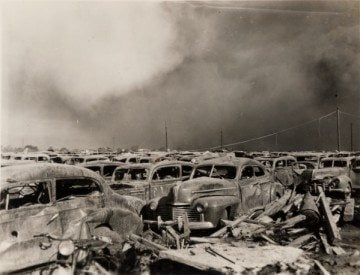
In the years after the apocalyptic events in Texas City, many of the lessons were unfortunately exiled to history—particularly how the hardworking folks who were most affected by the disaster were left with so many unanswered questions: Could anything have been done to make their community safer? Could something have been done to prevent the disaster? Was there enough oversight, regulation?
In search of answers, hundreds of survivors and families filed the first large-scale class-action lawsuit ever against the federal government. As it dragged on for years (the good folks in Texas City were eventually denied their due in court), the case circled, time and again, around a debate that is still resonating today—never more so than in West: Were officials in Texas City, in state government, in federal government, so eager for commerce, for jobs, that they endorsed the building of factories, plants and chemical wonderlands just a stone’s throw from homes, churches and even schools? Was all caution used? Did heavy industry—including extraordinarily dangerous fertilizer plants—show up in Texas because the state is so perpetually resistant to regulation?
Because I wrote a book about The Texas City Disaster, my phone began ringing last night with reporters asking about parallels between West and Texas City. A public radio producer who said he wasn’t from Texas wanted to know if it was common to have industrial facilities, like the ones in West, close to residential areas, to schools, to a nursing home. He wanted to know if that kind of thing was “grandfathered” in.
I told him it was complex, and we talked about an inherited political and economic ethos in Texas. That the anti-oversight credo runs deep. It’s in the state’s bedrock. And that, over time, the results are painfully predictable: There will be another explosion (there have been others, more recent ones, in Texas City). There will be more loss of life. And the same questions will emerge—and probably dissipate: What could have been done? Was there enough oversight?
Observer columnist Bill Minutaglio is the author of City on Fire: The Explosion That Devastated a Texas Town and Ignited a Landmark Legal Battle. He is also a clinical professor of journalism at The University of Texas at Austin.
